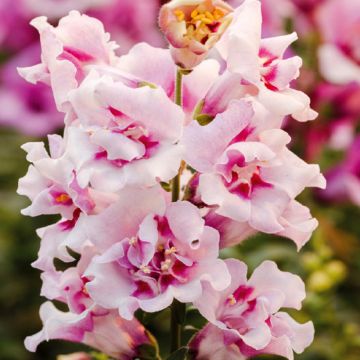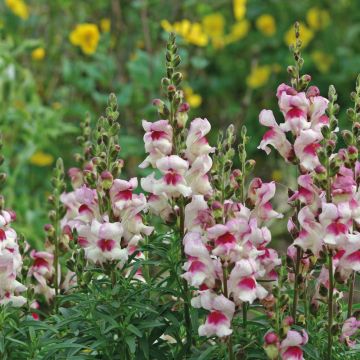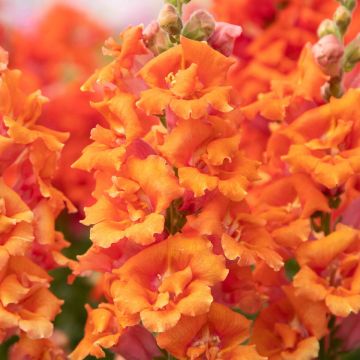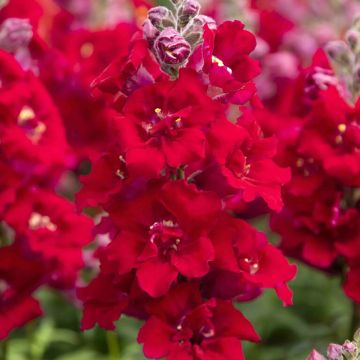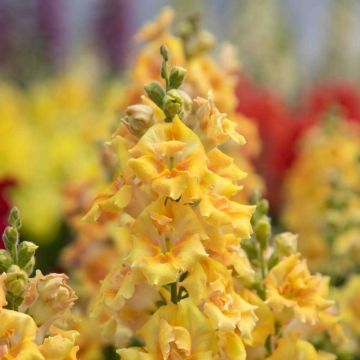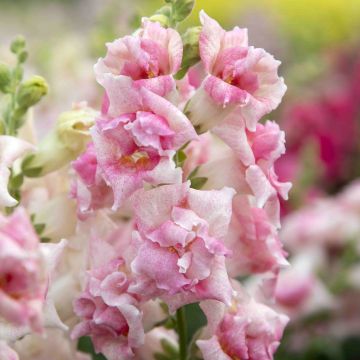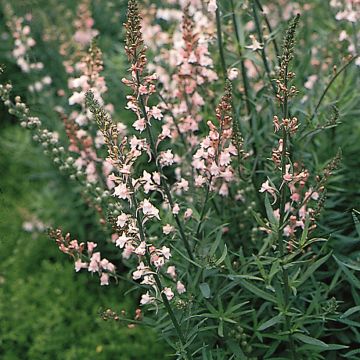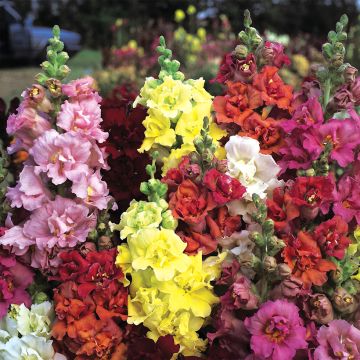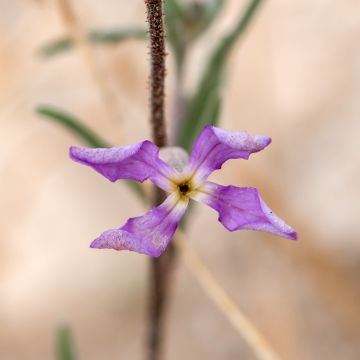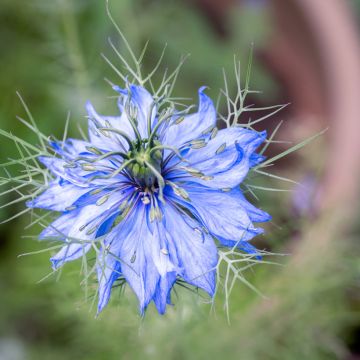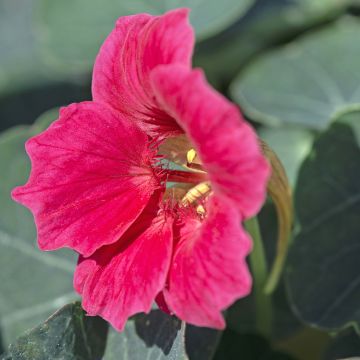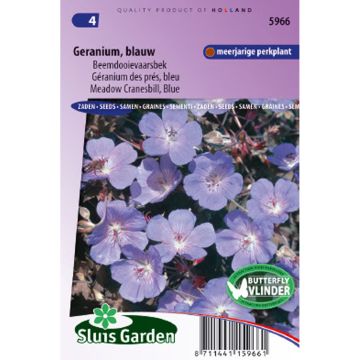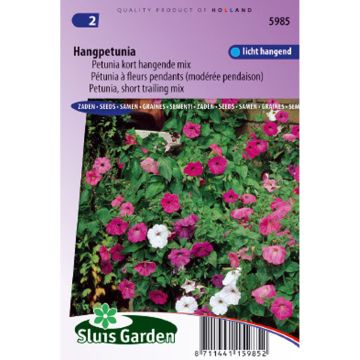

Antirrhinum majus Antiquity Lemon - Snapdragon
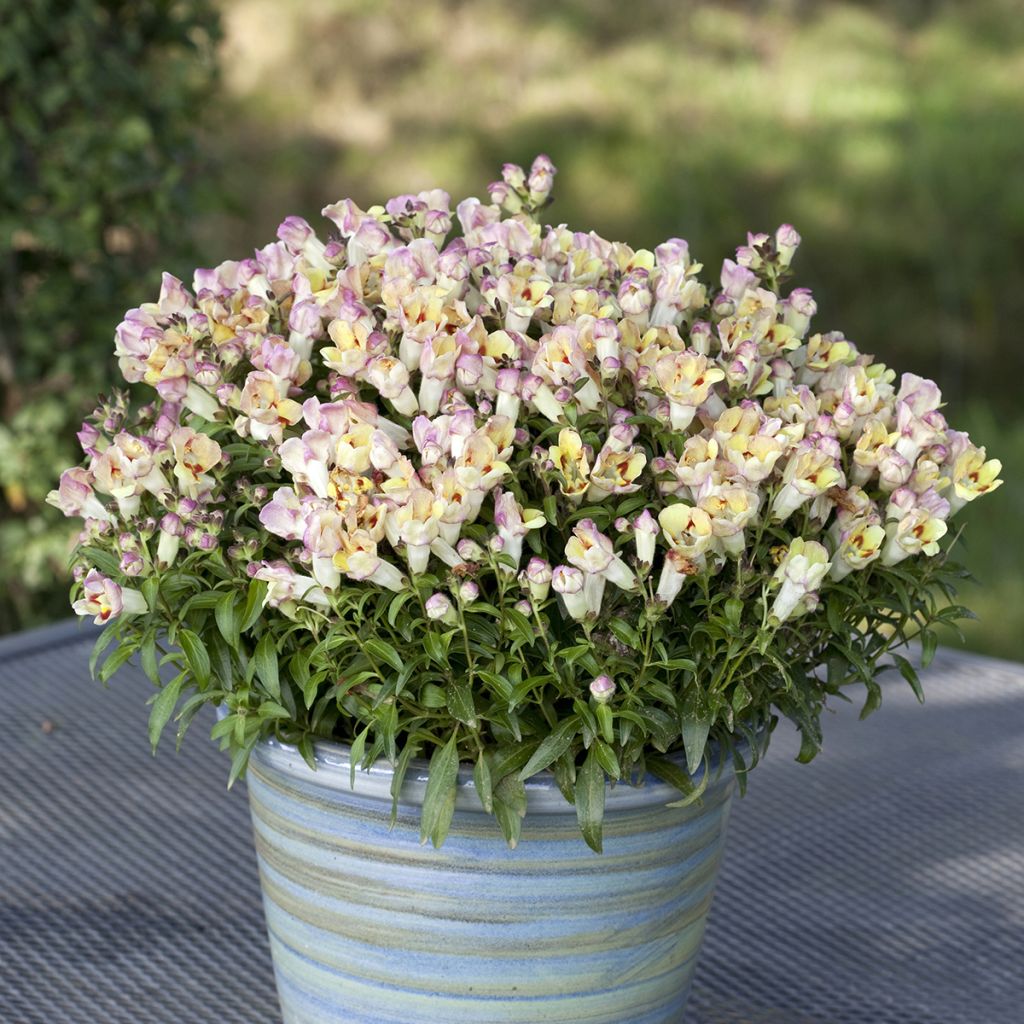

Antirrhinum majus Antiquity Lemon - Snapdragon
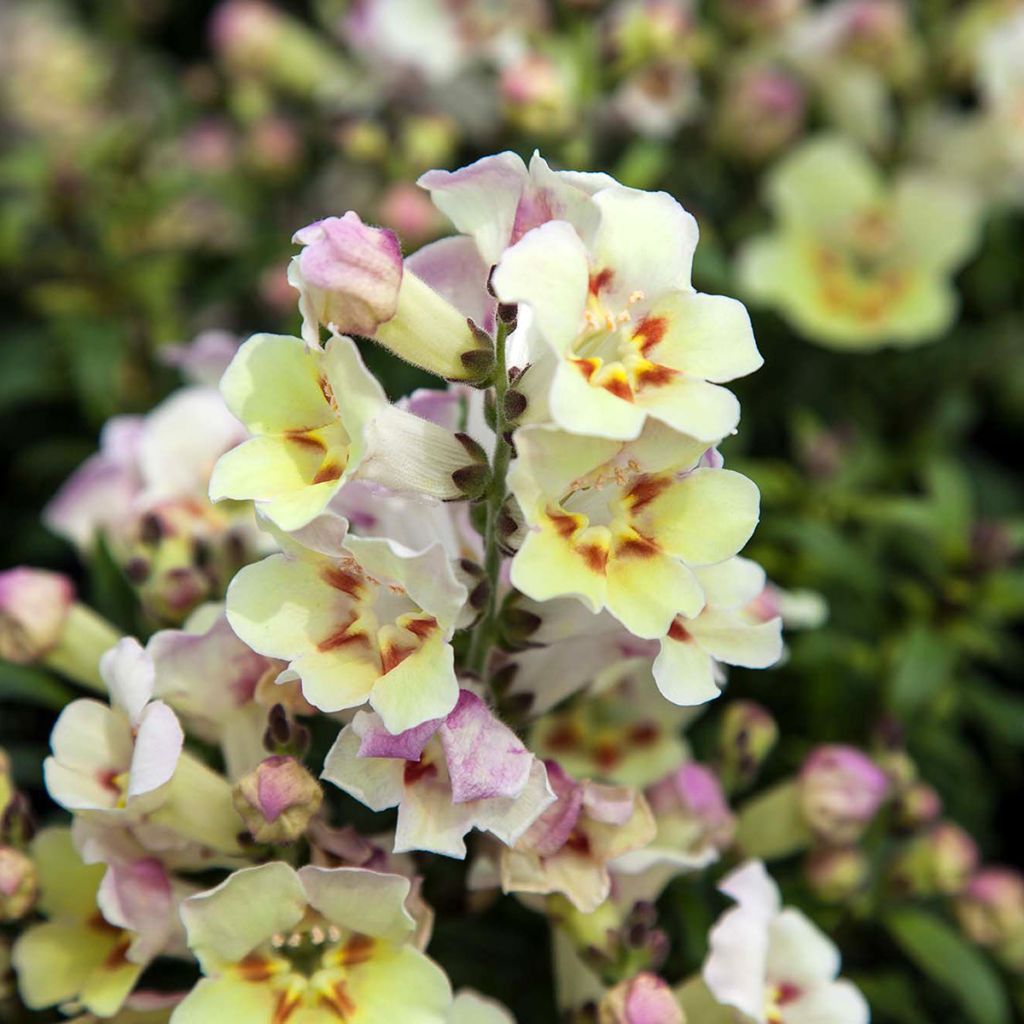

Antirrhinum majus Antiquity Lemon - Snapdragon
Antirrhinum majus Antiquity Lemon - Snapdragon
Antirrhinum x majus Antiquity Lemon
Snapdragon, Common Snapdragon
Special offer!
Receive a €20 voucher for any order over €90 (excluding delivery costs, credit notes, and plastic-free options)!
1- Add your favorite plants to your cart.
2- Once you have reached €90, confirm your order (you can even choose the delivery date!).
3- As soon as your order is shipped, you will receive an email containing your voucher code, valid for 3 months (90 days).
Your voucher is unique and can only be used once, for any order with a minimum value of €20, excluding delivery costs.
Can be combined with other current offers, non-divisible and non-refundable.
Home or relay delivery (depending on size and destination)
Schedule delivery date,
and select date in basket
This plant carries a 6 months recovery warranty
More information
We guarantee the quality of our plants for a full growing cycle, and will replace at our expense any plant that fails to recover under normal climatic and planting conditions.
Would this plant suit my garden?
Set up your Plantfit profile →
Description
The 'Antiquity Lemon' snapdragon is appreciated for its compact habit (approximately 30 cm tall) and the uniqueness of its open flowers. From June to August, and sometimes until the first frost, it is covered with pale yellow flowers marked with brick-red spots and tinged with mauve on the reverse. Whether annual or perennial depends on the climate and soil it is planted. Provide it with light, fertile, well-drained soil and plenty of sunlight, and it will enhance your beds, borders, and containers with its soft-toned flowers.
Belonging to the family Scrophulariaceae, Antirrhinum majus was an essential plant in priests' gardens. Native to the western Mediterranean Basin, it grows among rocks on the arid slopes in the south of France. The Antiquity series stands out for its dwarf and well-branched habit, especially its open flowers, which are unique in the Snapdragon family. This perennial forms an upright clump measuring 25 to 30 cm in all directions. Its leaves are dark green and robust. The flowering period extends from May-June to September-October until the first frost. The 'Antiquity Lemon' variety offers very dense spikes of tubular flowers with open ends. They are pale yellow, tinged with brown and mauve. They are appreciated by bumblebees and butterflies.
This compact variety is ideal for containers, beds, and borders. In your beds, don't hesitate to plant them close together, between 7 and 9 plants per square metre, to achieve a visually impactful effect. In a rustic spirit, for example, pair them with Moody Blues Damask Nigella and Perennial Sapphire Flax with their blue flowers. Once the plant is established, you can regularly remove faded flowers to prolong its flowering containers, beds, and borders. In your beds, don't hesitate to plant them close together, between 7 and 9 plants per square metre, to achieve a visually impactful effect. Pair them with Moody Blues Damask Nigella and Perennial Sapphire Flax with blue flowers. Once the plant is established and to prolong its flowering, you can regularly remove faded flowers.
Attention: These seeds are reserved for highly experienced gardeners who are accustomed to sowing very fine seeds. These seeds are as fine as dust, barely visible to the naked eye.
Report an error about the product description
Antirrhinum majus Antiquity Lemon - Snapdragon in pictures


Flowering
Foliage
Plant habit
Botanical data
Antirrhinum
x majus
Antiquity Lemon
Plantaginaceae (Scrophulariaceae)
Snapdragon, Common Snapdragon
Cultivar or hybrid
Other Antirhinum - Snapdragon seeds
View all →Planting and care
Sow your 'Antiquity Lemon' snapdragon seeds under cover between January and March in a tray on the surface of well-draining seed compost. Cover the seeds with a very thin layer of compost and keep it slightly moist. Place your tray at a temperature between 20 and 25°C. The seeds will germinate in 14 to 21 days. As soon as the young plants are large enough to handle (2-leaf stage), transplant them into pots. Pinch the main stems to encourage branching. Plant them in their final position once the last frost has passed. Space them about 20 to 30 cm apart.
Another option is to sow in September and then place the plants in pots under cover during the winter. You can then plant them out in the following spring.
In mild climate regions, it is also possible to sow directly in the open ground in April-May. Thin out the rows to keep one plant every 20 to 30 cm. In this case, flowering will be later, but it will allow you to spread out the flowering period.
Snapdragons thrive in full sun in light, fertile, and well-drained soil. They are often grown as annuals, but they are perennials that, when well protected from the cold (mulching, well-drained soil), can survive the winter and start growing again as soon as the warm weather arrives.
Sowing period
Intended location
This item has not been reviewed yet - be the first to leave a review about it.
Similar products
Haven't found what you were looking for?
Hardiness is the lowest winter temperature a plant can endure without suffering serious damage or even dying. However, hardiness is affected by location (a sheltered area, such as a patio), protection (winter cover) and soil type (hardiness is improved by well-drained soil).

Photo Sharing Terms & Conditions
In order to encourage gardeners to interact and share their experiences, Promesse de fleurs offers various media enabling content to be uploaded onto its Site - in particular via the ‘Photo sharing’ module.
The User agrees to refrain from:
- Posting any content that is illegal, prejudicial, insulting, racist, inciteful to hatred, revisionist, contrary to public decency, that infringes on privacy or on the privacy rights of third parties, in particular the publicity rights of persons and goods, intellectual property rights, or the right to privacy.
- Submitting content on behalf of a third party;
- Impersonate the identity of a third party and/or publish any personal information about a third party;
In general, the User undertakes to refrain from any unethical behaviour.
All Content (in particular text, comments, files, images, photos, videos, creative works, etc.), which may be subject to property or intellectual property rights, image or other private rights, shall remain the property of the User, subject to the limited rights granted by the terms of the licence granted by Promesse de fleurs as stated below. Users are at liberty to publish or not to publish such Content on the Site, notably via the ‘Photo Sharing’ facility, and accept that this Content shall be made public and freely accessible, notably on the Internet.
Users further acknowledge, undertake to have ,and guarantee that they hold all necessary rights and permissions to publish such material on the Site, in particular with regard to the legislation in force pertaining to any privacy, property, intellectual property, image, or contractual rights, or rights of any other nature. By publishing such Content on the Site, Users acknowledge accepting full liability as publishers of the Content within the meaning of the law, and grant Promesse de fleurs, free of charge, an inclusive, worldwide licence for the said Content for the entire duration of its publication, including all reproduction, representation, up/downloading, displaying, performing, transmission, and storage rights.
Users also grant permission for their name to be linked to the Content and accept that this link may not always be made available.
By engaging in posting material, Users consent to their Content becoming automatically accessible on the Internet, in particular on other sites and/or blogs and/or web pages of the Promesse de fleurs site, including in particular social pages and the Promesse de fleurs catalogue.
Users may secure the removal of entrusted content free of charge by issuing a simple request via our contact form.
The flowering period indicated on our website applies to countries and regions located in USDA zone 8 (France, the United Kingdom, Ireland, the Netherlands, etc.)
It will vary according to where you live:
- In zones 9 to 10 (Italy, Spain, Greece, etc.), flowering will occur about 2 to 4 weeks earlier.
- In zones 6 to 7 (Germany, Poland, Slovenia, and lower mountainous regions), flowering will be delayed by 2 to 3 weeks.
- In zone 5 (Central Europe, Scandinavia), blooming will be delayed by 3 to 5 weeks.
In temperate climates, pruning of spring-flowering shrubs (forsythia, spireas, etc.) should be done just after flowering.
Pruning of summer-flowering shrubs (Indian Lilac, Perovskia, etc.) can be done in winter or spring.
In cold regions as well as with frost-sensitive plants, avoid pruning too early when severe frosts may still occur.
The planting period indicated on our website applies to countries and regions located in USDA zone 8 (France, United Kingdom, Ireland, Netherlands).
It will vary according to where you live:
- In Mediterranean zones (Marseille, Madrid, Milan, etc.), autumn and winter are the best planting periods.
- In continental zones (Strasbourg, Munich, Vienna, etc.), delay planting by 2 to 3 weeks in spring and bring it forward by 2 to 4 weeks in autumn.
- In mountainous regions (the Alps, Pyrenees, Carpathians, etc.), it is best to plant in late spring (May-June) or late summer (August-September).
The harvesting period indicated on our website applies to countries and regions in USDA zone 8 (France, England, Ireland, the Netherlands).
In colder areas (Scandinavia, Poland, Austria...) fruit and vegetable harvests are likely to be delayed by 3-4 weeks.
In warmer areas (Italy, Spain, Greece, etc.), harvesting will probably take place earlier, depending on weather conditions.
The sowing periods indicated on our website apply to countries and regions within USDA Zone 8 (France, UK, Ireland, Netherlands).
In colder areas (Scandinavia, Poland, Austria...), delay any outdoor sowing by 3-4 weeks, or sow under glass.
In warmer climes (Italy, Spain, Greece, etc.), bring outdoor sowing forward by a few weeks.






























